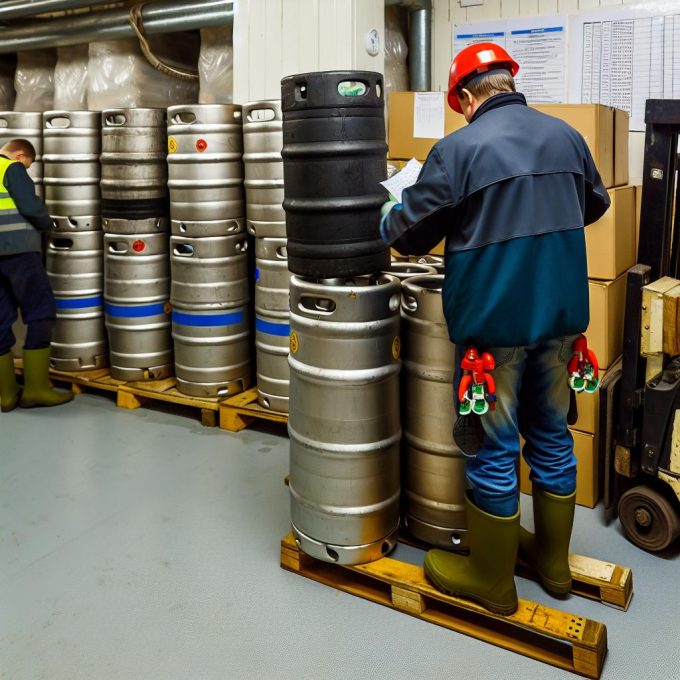The Role of Kegs in Beverage Transport
The use of kegs represents a pivotal element in the distribution and transport of beverages, primarily for carbonated drinks like beer and cider. Kegs, generally cylindrical containers made from stainless steel or aluminum, are designed to maintain the integrity of beverages during shipping and storage. This ensures that the beverages are protected from light, oxygen, and contaminants.
Advantages of Using Kegs
One of the primary benefits of kegs is their ability to preserve the quality of the beverage. By minimizing exposure to air and light, which can lead to oxidation and spoilage, kegs ensure that the beverage remains fresh and tasteful. Additionally, the durable build of kegs significantly reduces the risk of damage during transit, making them more reliable than other packaging options like bottles or cans.
In terms of cost-effectiveness, kegs can be reused multiple times, reducing the need for frequent packaging purchases. This reusability not only helps in cutting down expenses but also contributes positively to environmental sustainability. Moreover, kegs can store large quantities of liquid, which is advantageous for events and establishments that require high volumes of beverage service.
Types of Kegs and Their Uses
Different types of kegs are available to cater to various beverage types and volume needs. The standard sizes found in the market include:
Half-Barrel Keg: Commonly used in bars and restaurants, this keg holds approximately 15.5 gallons or 124 pints of liquid.
Quarter-Barrel Keg: Also known as a “Pony Keg,” it holds roughly 7.75 gallons and is often used for smaller gatherings.
Mini Kegs: They are portable and typically hold around 1.32 gallons, making them suitable for personal use or small events.
Each of these keg types serves different purposes, and the choice often depends on the volume requirements and storage capabilities of the user.
The Importance of Keg Maintenance
Regular maintenance and proper cleaning of kegs are crucial for ensuring that they remain in good condition and do not affect the quality of the beverage. Neglecting to clean kegs can result in the growth of bacteria and mold, which compromises the cleanliness and safety of the beverage inside.
Breweries and beverage companies often invest in specialized cleaning equipment and protocols to ensure that kegs are sanitized effectively. Proper maintenance also involves inspecting the fittings and seals to prevent leaks and ensure a perfect seal.
Keg Maintenance Procedures
To maintain the quality of beverages and the longevity of kegs, several procedures are essential. Regular cleaning involves a series of steps that start with a thorough rinse. This initial rinse is followed by a dedicated cleaning solution, often a caustic soda, which is used to clean the interior walls of the keg. After the cleaner has done its job, another rinse removes any residual cleaning agent.
Sanitization is a separate step, crucial for eliminating any bacteria or unwanted microorganisms that might linger after the initial cleaning process. Sanitizers like iodine-based solutions or acid anionic solutions are commonly used. Post-sanitization, kegs are typically pressurized to check for seal integrity. Maintaining pressure levels within the keg is vital as it ensures that the liquid inside will remain free from exposure to external elements.
Sustainability Perspectives
The reuse of kegs aligns with sustainability goals in reducing waste and resource consumption. Unlike single-use bottles and cans, which contribute to landfill waste, kegs offer a more eco-friendly alternative due to their longevity and reusability. Additionally, innovations in keg design, such as the development of recyclable plastic kegs, are further enhancing their sustainability profile.
From an environmental standpoint, kegs offer a significant reduction in the carbon footprint associated with beverage packaging. Each time a keg is reused, there is a corresponding decrease in the need for new packaging materials, leading to less energy consumption and lower greenhouse gas emissions. Brewing companies are increasingly embracing these sustainable practices to align their operations with environmental responsibility goals.
The Future of Keg Technologies
Technological innovations in kegging are driving the industry toward more efficient systems. New developments are focused on improving the materials used, with emphasis on lighter yet more durable composites. The advent of smart keg technologies, where kegs are equipped with sensors and tracking devices, is another area of growth. This technology allows breweries to monitor pressure levels, temperature, and even track keg locations in real time.
Such innovations are not only enhancing the functionality of kegs but are also contributing to operational efficiencies for businesses. With real-time data, companies can optimize their supply chains, reduce loss, and better forecast their kegging and inventory needs.
The interplay between environmental considerations and technological advancements is setting the stage for a sustainable future in beverage transport. By adopting modern kegging solutions, the industry can continue to make positive contributions toward sustainability goals while enhancing product quality and distribution effectiveness. The journey toward more eco-friendly kegging practices is ongoing, with significant potential for future advancements.
Kegs play an indispensable role in the beverage industry by providing a robust and efficient means of transport and preservation. By continuing to innovate and prioritize maintenance, the use of kegs can contribute positively to both economic efficiency and environmental responsibility. For more insights into the topic, visit beverage media.

